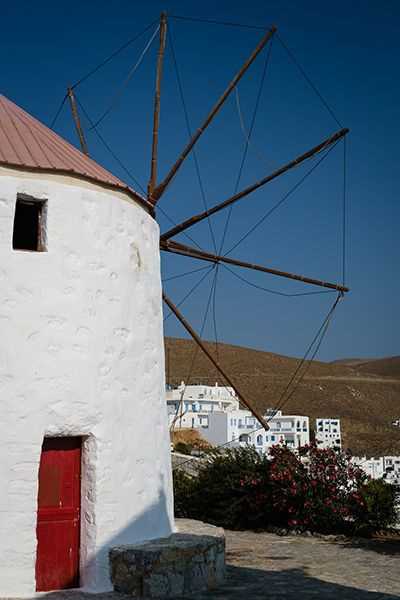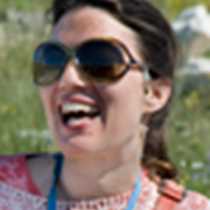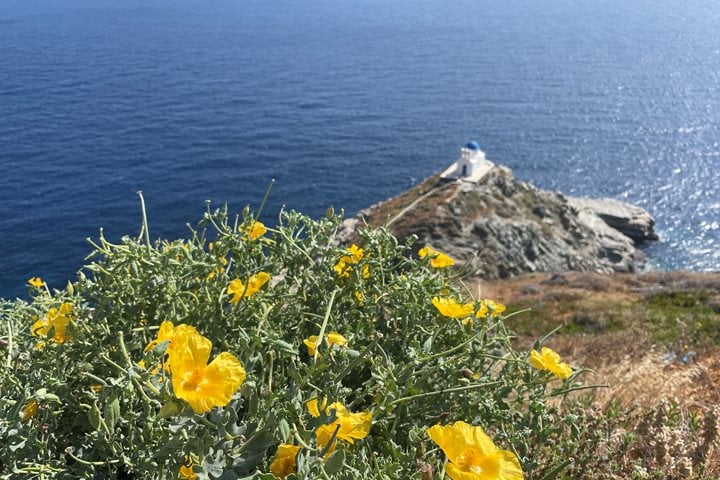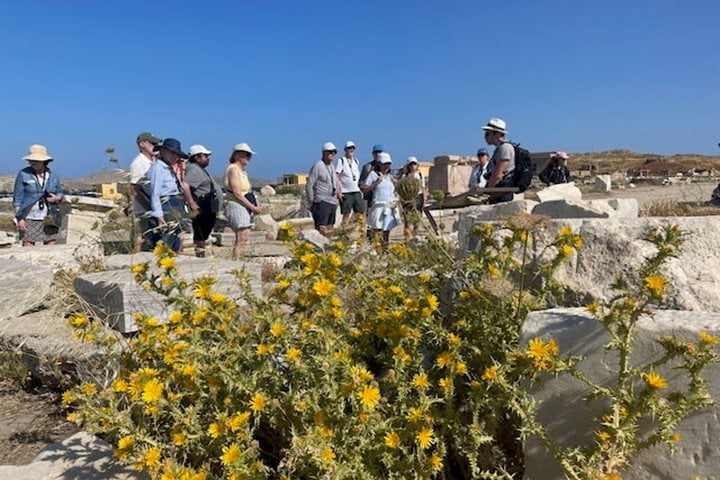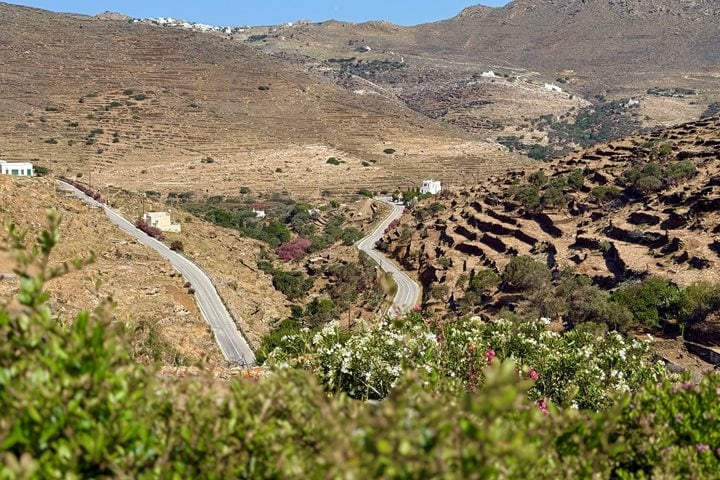We sailed early this morning into the bay of Astipalea, one of the most remote and unspoiled gems of Greece. It sits at a strategic point between the Cycladic Islands and the Dodecanese to the south like an arrow showing the way to sailors. Astipalea looks like a butterfly connected by a narrow canal. It used to be called Pyra, which means fire, as the earth there has a deep reddish color.
Homer refers to Astipalea as the enemy to snakes—the island had none and this was known from at least the eighth century BC! From this island came one of the famous seamen who followed Alexander the Great all the way to India! Astipalea means “old city,” and remains of an ancient Greek city have been excavated under the medieval Venetian castle as well as in other parts of the island.
Monk seals and a very rare species of Aegean seagulls often seek refuge on the island of Astipalea. They are protected by strict regulations as these are nearly extinct. They can be seen on some of the uninhabited islands around Astipalea. Rare plants and endemic flowers are also found on the island.
By tender, we approached Astipalea from a deep cove and found ourselves boarding the one and only small local bus available on the island! We took a short drive from the harbor of Pera Gialos to the upper town, called Chora and meaning “country” but referring to the center of the island. Twelve windmills sat at this high and windy point—a sign of agricultural prosperity and a lovely photo for us.
The view of the cove below and the castle and whitewashed houses crowning the hill was magic. We walked passed a number of small, traditional coffee shops and followed a whitewashed street among houses that brought us to the entrance of the castle. The view overlooking the flat-roofed houses was stunning. The castle was built by the Venetians after the fourth crusade when they took over a large part of the Aegean Islands.
The castle had two lovely churches with blue domes and they were open for us to visit. The churches dated back to the early 1800s and had been the center of island life for many years. Beautiful and important Byzantine icons glowed in front of the whitewashed church. We had amazing opportunities to capture photos of the blue and white buildings and the deep blue of the Aegean moved our souls. This was what Greece is about and we had it all to ourselves!
We wandered through more narrow streets that formed the center of the castle to another church, Portaitisa, the church of the entrance. The blue of the Aegean Sea, cubic whitewashed houses, and people waving from the windows welcomed us to their island.
After our stroll, some of us relaxed and enjoyed a traditional Greek coffee in one of the coffee shops, people-watching and soaking up the atmosphere of the island. Later, some of us took the bus back down to the harbor of Pera Gialos while others decided to walk this short, lovely route around the neighborhoods to the waterfront.
We took photos of traditional boats and fishermen repairing fishing nets before we returned to Sea Cloud.
We enjoyed a lovely lunch gazing back at the houses perched on Astipalea while anchored close to the harbor. The sails were put up and, with the strong winds, we reached seven knots with no engines! After lunch, we heard a lecture about the fourth crusade that explained why Greece has so many Venetian fortresses. Then we enjoyed an interesting lesson on how to take better photos with our smartphones. As the sun set and became golden, we enjoyed a delicious buffet dinner.
From a local song that refers to Astipalea as a maiden:
Princes you were beleaguered for so long
In once upon a time a maiden castle
The corsairs might have raided your might
But no one can take away your splendor!

